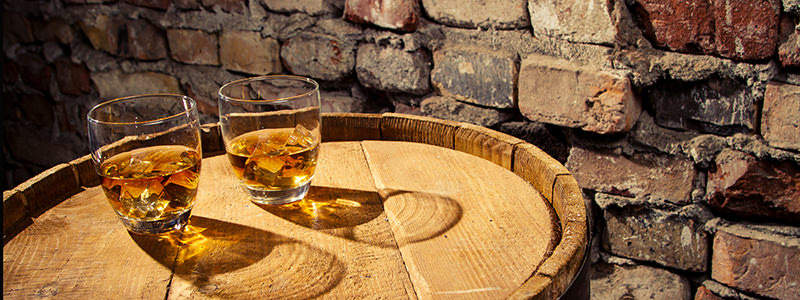Whiskey is a truly gorgeous spirit. We could write odes to the aroma and the flavor, but another important draw of whiskey is its beautiful color. While the many shades of whiskey vary, most whiskey has a brownish hue. So what gives whiskey its deep tint? The answer also plays into what grants whiskey its mature taste: charred oak.
Whiskey is cask-aged, often in charred oak barrels. In simple terms, charring a barrel means lighting the inside of it on fire so that the wood produces char. Here’s a video of Jameson doing it:
There are different levels of char, which (among many other factors) help contribute to whiskey’s flavor. Whiskey that’s been sitting in charred oak for years often has a deeper color (and many would argue a more complex flavor) than whiskey that’s only been hanging out for a few months. However, many new distilleries have used several methods to “speed up” the aging process, including sticking charred oak staves into batches of whiskey or using smaller barrels so that the surface area to volume ration is increased. Other times, companies will add artificial coloring to make their whisky look darker. Brown rum goes through the same processes.
Now, white (clear) whiskey does exist, but so does a surrounding myth: that white whiskey goes straight from the still into the bottle. In fact, white whiskey is typically barrel-aged – the barrels just aren’t charred. Sometimes you’ll notice that white whiskey has picked up a dingy, yellowish color. Other times, filtration (which you can do with brown whiskey as well) has made the white whiskey crystal clear. The lack of brown, however, is due to the lack of char.
When it comes to light and dark versions of the same spirit, the difference goes beyond what you see. Lighter whiskey will often have a fruitier taste, while darker spirits will contain flavors associated with maturation: vanilla, caramel, molasses, leather, and so on. Level of char, in addition to time spent in the barrel, helps contribute to both the darkness of the color and the taste of the spirit.

